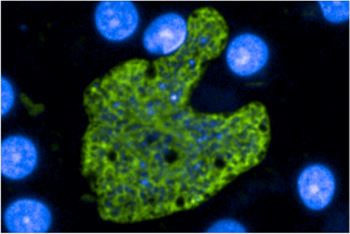|
Anopheles Introlatus
''Anopheles introlatus'' (formerly ''Anopheles balabacensis introlatus'') is the main vector for ''Plasmodium cynomolgi'' (a simian malaria Malaria is a mosquito-borne infectious disease that affects humans and other animals. Malaria causes symptoms that typically include fever, tiredness, vomiting, and headaches. In severe cases, it can cause jaundice, seizures, coma, or death. S ...) in Malaya. References introlatus {{Culicidae-stub ... [...More Info...] [...Related Items...] OR: [Wikipedia] [Google] [Baidu] |
Plasmodium Cynomolgi
''Plasmodium cynomolgi'' is an apicomplexan parasite that infects mosquitoes and Asian Old World monkeys. In recent years, a number of natural infections of humans have also been documented. This species has been used as a model for human ''Plasmodium vivax'' because ''Plasmodium cynomolgi'' shares the same life cycle and some important biological features with '' P. vivax''. Life cycle The life cycle of ''P. cynomolgi'' resembles that of other ''Plasmodium'' species, particularly the related human parasite ''Plasmodium vivax''. Like other ''Plasmodium'' species, ''P. cynomolgi'' infects both an insect host and a vertebrate (generally Old World monkeys). The parasite is transmitted when the mosquito host takes a blood meal from the vertebrate host. During the feeding, motile parasites called sporozoites are injected from the mosquito salivary gland into the host tissue. These sporozoites move into the bloodstream and infect cells in the host liver, where they grow and divide ... [...More Info...] [...Related Items...] OR: [Wikipedia] [Google] [Baidu] |
Malaria
Malaria is a mosquito-borne infectious disease that affects humans and other animals. Malaria causes symptoms that typically include fever, tiredness, vomiting, and headaches. In severe cases, it can cause jaundice, seizures, coma, or death. Symptoms usually begin ten to fifteen days after being bitten by an infected mosquito. If not properly treated, people may have recurrences of the disease months later. In those who have recently survived an infection, reinfection usually causes milder symptoms. This partial resistance disappears over months to years if the person has no continuing exposure to malaria. Malaria is caused by single-celled microorganisms of the ''Plasmodium'' group. It is spread exclusively through bites of infected ''Anopheles'' mosquitoes. The mosquito bite introduces the parasites from the mosquito's saliva into a person's blood. The parasites travel to the liver where they mature and reproduce. Five species of ''Plasmodium'' can infect and be spread by h ... [...More Info...] [...Related Items...] OR: [Wikipedia] [Google] [Baidu] |
Malay Peninsula
The Malay Peninsula (Malay: ''Semenanjung Tanah Melayu'') is a peninsula in Mainland Southeast Asia. The landmass runs approximately north–south, and at its terminus, it is the southernmost point of the Asian continental mainland. The area contains Peninsular Malaysia, Southern Thailand, and the southernmost tip of Myanmar (Kawthaung). The island country of Singapore also has historical and cultural ties with the region. The indigenous people of the peninsula are the Malays, an Austronesian people. The Titiwangsa Mountains are part of the Tenasserim Hills system and form the backbone of the peninsula and the southernmost section of the central cordillera, which runs from Tibet through the Kra Isthmus, the peninsula's narrowest point, into the Malay Peninsula. The Strait of Malacca separates the Malay Peninsula from the Indonesian island of Sumatra, and the south coast is separated from the island of Singapore by the Straits of Johor. Etymology The Malay term ''Tanah Me ... [...More Info...] [...Related Items...] OR: [Wikipedia] [Google] [Baidu] |

